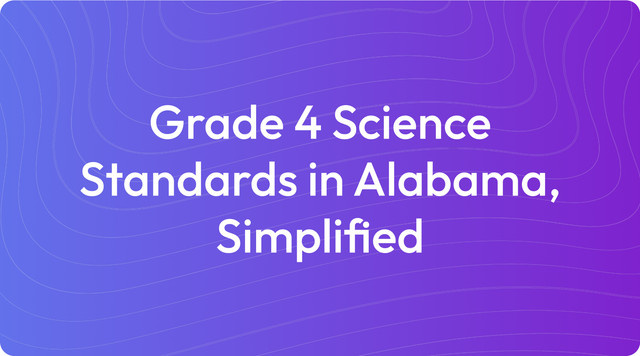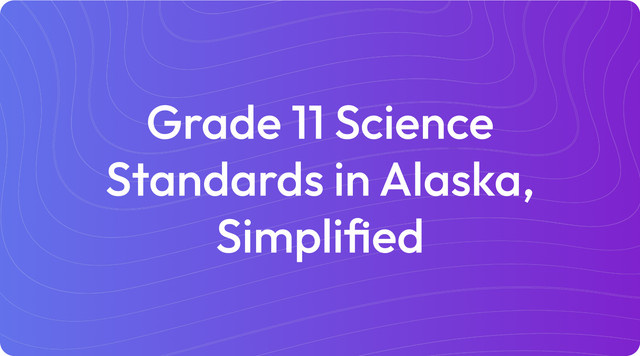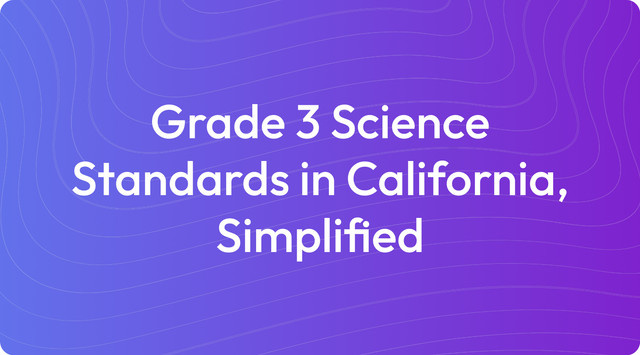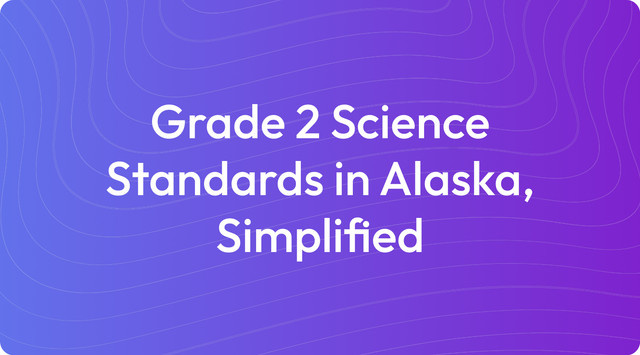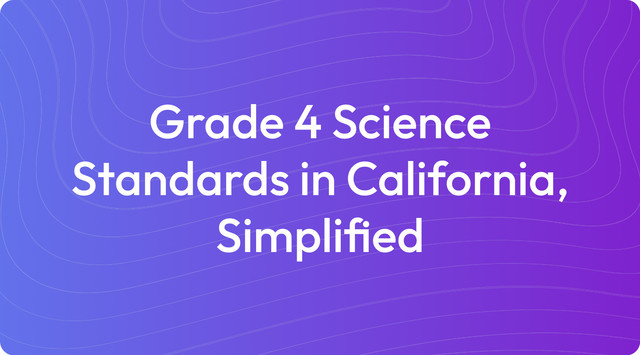Grade 9 Science Standards in California, Simplified
Grade 9 science in California covers motion, matter, and energy. See the key info—read more on TeachShare!
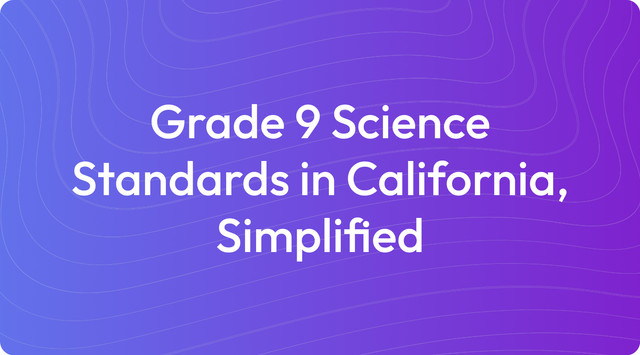
We understand that working with academic standards can be a complex part of teaching. They provide the framework for what students need to learn, but figuring out how to apply them in your classroom takes time and effort. Our goal is to help you break down these requirements into practical, manageable steps for your lesson planning.
Education standards are essentially learning goals that outline what students should know by the end of a grade or course. They are not a script for how to teach, but rather a guide for your curriculum. For instance, California's Grade 9 science standards specify that students should understand concepts like chemical reactions and energy conversion, giving you the foundation to build your lessons.
What Are Grade 9 Science Standards in California?
California's Grade 9 science standards are built upon the California Next Generation Science Standards (CA NGSS). They establish a foundation in Physical Science, Life Science, Earth and Space Science, and Engineering Design. This framework uses a three-dimensional learning approach, focusing on Science and Engineering Practices (SEPs), Crosscutting Concepts (CCCs), and Disciplinary Core Ideas (DCIs).
Here is an outline of the key areas covered in the Grade 9 standards:
1. Physical Science (PS): Matter, Energy, and Motion
PS1: Matter and Its Interactions
Key Standard (HS-PS1-2): Construct and revise explanations for how atoms rearrange in chemical reactions, supported by evidence.
Key Standard (HS-PS1-5): Apply scientific principles to explain how temperature and concentration affect reaction rates.
PS3: Energy
Key Standard (HS-PS3-1): Use models to illustrate relationships between energy at the macroscopic and atomic levels.
Key Standard (HS-PS3-3): Design, build, and refine a device that converts energy from one form to another.
2. Life Science (LS): Ecosystems and Inheritance
LS1: From Molecules to Organisms
Key Standard (HS-LS1-3): Plan and conduct investigations to provide evidence of feedback mechanisms maintaining homeostasis in living organisms.
LS2: Ecosystems: Interactions, Energy, and Dynamics
Key Standard (HS-LS2-4): Use mathematical representations to support claims about how energy flows and matter cycles in ecosystems.
LS3: Heredity
Key Standard (HS-LS3-1): Ask questions to clarify relationships about the role of DNA in inheritance and trait expression.
3. Earth and Space Science (ESS): Earth’s Systems and Human Activity
ESS2: Earth’s Systems
Key Standard (HS-ESS2-1): Develop models to explain how energy flow drives Earth’s systems (e.g., water cycle, plate tectonics).
ESS3: Human Impacts
Key Standard (HS-ESS3-4): Evaluate solutions to reduce human impact on the environment and Earth’s resources.
4. Engineering, Technology, and Applications of Science (ETS): Problem-Solving
ETS1: Engineering Design
Key Standard (HS-ETS1-2): Design and evaluate solutions to complex real-world problems by considering constraints and trade-offs.
Key Crosscutting Concepts (CCCs)
Energy and Matter: Understanding how energy and matter interact in systems, from chemical reactions to ecosystems
Cause and Effect: Exploring how changes in one variable affect systems (e.g., concentration affecting reaction rates)
Systems and Models: Using models to represent and predict interactions (e.g., energy flow in ecosystems or Earth’s systems)
The framework for these standards is guided by the California Department of Education's content standards, which are adapted from the national Next Generation Science Standards.
Key Tested Standards
We know the CA NGSS framework is extensive, so it helps to know where to focus. State assessments often concentrate on a core set of standards, and understanding these key areas can help you structure your curriculum for student success.
The key tested standards for Grade 9 Science often include the following:
1. Physical Science (PS): Matter, Energy, and Motion
HS-PS1-2: Chemical Reactions: Construct and revise explanations for how atoms rearrange during chemical reactions, supported by evidence.
HS-PS1-5: Reaction Rates: Apply scientific principles to explain how temperature, concentration, and surface area affect reaction rates.
HS-PS3-3: Energy Conversion: Design, build, and refine a device that converts energy from one form to another.
2. Life Science (LS): Ecosystems and Genetics
HS-LS1-3: Homeostasis in Living Systems: Plan and conduct investigations to provide evidence of feedback mechanisms that maintain homeostasis.
HS-LS2-4: Energy Flow in Ecosystems: Use mathematical representations to explain how energy flows and matter cycles in ecosystems.
HS-LS3-1: Genetics and DNA: Ask questions to clarify the role of DNA in inheritance and the expression of traits.
We've compiled this information based on official guidance to help you focus your instruction the Next Generation Science Standards and the California Department of Education.
Example Learning Objectives for Unit Planning
Learning objectives translate broad standards into specific, measurable goals for your students. They clarify what students will be able to do by the end of a lesson, guiding both your instruction and their learning.
To help you get started, here are some example learning objectives based on the key tested standards for Grade 9 Science in California:
Physical Science (PS): Matter, Energy, and Motion
HS-PS1-2 (Chemical Reactions): Students will be able to construct an evidence-based explanation of how atoms are conserved and rearranged during a chemical reaction.
HS-PS1-5 (Reaction Rates): Students will be able to apply scientific principles to explain how changes in temperature and concentration affect the rate of a reaction.
HS-PS3-3 (Energy Conversion): Students will be able to design and refine a device that converts one form of energy into another.
Life Science (LS): Ecosystems and Genetics
HS-LS1-3 (Homeostasis): Students will be able to plan an investigation to provide evidence of feedback mechanisms that maintain homeostasis.
HS-LS2-4 (Energy Flow in Ecosystems): Students will be able to use a mathematical model to describe the flow of energy and cycling of matter within an ecosystem.
HS-LS3-1 (Genetics and DNA): Students will be able to ask questions that clarify the relationship between DNA, genes, and the expression of inherited traits.
Earth and Space Science (ESS): Earth’s Systems and Resources
HS-ESS2-1 (Earth Systems): Students will be able to develop a model illustrating how the flow of Earth’s internal and external energy drives geological processes.
HS-ESS3-4 (Human Impact): Students will be able to evaluate a proposed solution for reducing human impacts on natural systems.
Engineering and Technology (ETS): Problem Solving
HS-ETS1-1 (Defining Problems): Students will be able to analyze a major global challenge to define criteria and constraints for potential solutions.
HS-ETS1-4 (Optimizing Solutions): Students will be able to use a model to test and improve a proposed solution to a complex real-world problem.
Key Changes & Updates
The Grade 9 Science Standards, aligned with the California Next Generation Science Standards (CA NGSS), represent a significant shift in how science is taught. The core of this update is the move to “three-dimensional learning.” This framework weaves together Science and Engineering Practices (what students do), Disciplinary Core Ideas (what students know), and Crosscutting Concepts (how students think across disciplines). This change moves instruction away from memorizing facts and toward a more hands-on, inquiry-based approach where students actively engage in scientific exploration.
This updated approach also places a strong emphasis on connecting classroom learning to real-world applications. Lessons are often centered around observable phenomena, helping students see the relevance of science in their daily lives. A key part of this is the integration of Engineering Design, which challenges students to design and test solutions for complex problems. By focusing on evidence-based explanations and systems thinking, these standards help you build foundational critical thinking and problem-solving skills in your students, preparing them for more advanced courses.
Create with TeachShare
We know that translating these extensive standards into engaging classroom materials can be a demanding task. Our platform is designed to support you by simplifying the process of creating high-quality, standards-aligned resources. We handle the heavy lifting of curriculum alignment, so you can focus more on what you do best: teaching. Start creating standards-aligned instructional resources with TeachShare now.
Frequently Asked Questions
What are the core components of the Grade 9 NGSS-based standards in California?
The Grade 9 science curriculum is built around four main disciplines. Here’s a look at what your students will explore:
- Physical Science: Investigating chemical reactions, energy conversions, and the principles of forces and motion.
- Life Science: Exploring ecosystem dynamics, DNA and heredity, and how organisms maintain internal balance.
- Earth and Space Science: Studying Earth's systems like plate tectonics and the water cycle, along with the human impact on the planet.
- Engineering Design: Applying scientific knowledge to design and test solutions for real-world challenges.
How do the NGSS standards differ from previous science standards?
The NGSS framework represents a significant shift from older standards. The main differences are:
- Three-Dimensional Learning: It integrates scientific practices, crosscutting concepts, and core ideas into every lesson.
- Real-World Applications: Learning is centered around phenomena that students can observe in their daily lives.
- Hands-On Learning: Students actively participate in investigations, build models, and solve problems.
- Engineering Design: It incorporates engineering principles, asking students to design, test, and improve solutions.
What are some examples of classroom activities that align with these standards?
You can bring these standards to life with engaging, hands-on projects. Here are a few examples:
- Investigating how factors like temperature affect the speed of chemical reactions.
- Designing a simple wind turbine or solar-powered device to show energy conversion.
- Modeling how DNA dictates genetic traits and variations.
- Creating food web diagrams to illustrate the flow of energy in an ecosystem.
- Developing a plan to reduce a school's carbon footprint or conserve local resources.
How does this curriculum prepare students for life outside of school?
These standards are designed to connect classroom concepts to the world around us, helping students understand:
- The role of chemical processes like combustion in everyday life.
- How ecosystems are affected by changes such as habitat loss or climate shifts.
- Practical ways to reduce human impact on natural resources through technology and conservation.
- The process of designing and improving solutions for global issues like pollution or the need for renewable energy.
Why is engineering integrated into the Grade 9 science curriculum?
Including engineering in science class is a thoughtful choice with several key benefits. It helps to:
- Teach students to apply scientific principles to solve practical problems.
- Encourage creativity and critical thinking through a cycle of designing, testing, and refining solutions.
- Illustrate the direct connection between science, technology, and daily life, preparing students for future STEM careers.
Answer


